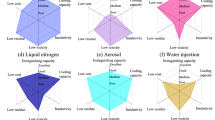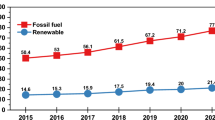Abstract
1-Hydroxy-7-azabenzotriazole (HOAT) as a key benzotriazole derivative has been widely used in biological, chemical, and pharmaceutical fields. Nevertheless, its energetic property was usually neglected and its thermal hazard characteristics were still unknown. Therefore, this study focused on analyzing the thermal hazard characteristics of HOAT in nonisothermal, isothermal, and adiabatic conditions through differential scanning calorimetry, thermogravimetric analyzer, and accelerating rate calorimeter. The relevant thermal decomposition parameters and process safety parameters were evaluated, and the most probable mechanistic function of the main exothermic stage of HOAT decomposition was identified. The microscopic pyrolysis mechanisms of HOAT were investigated based on density functional theory calculations, thermogravimetric-photoionization mass spectrometry, X-ray photoelectron spectroscopy, and energy-dispersive spectra tests. Electrostatic potentials, Laplacian bond order, and main decomposition pathways of HOAT pyrolysis were explored. The research results demonstrated that HOAT decomposition is a process with large amounts of heat and gas released rapidly. The main gaseous products include N2, C2H2, NO, and HCN. The most dangerous step is the six-membered ring opening to form a five-membered carbon–nitrogen heterocyclic with higher heat release. This study contributed to understanding the thermal decomposition characteristics of HOAT and properly providing guidance for improving the thermal safety of HOAT production, transportation, storage, application and formulating emergency plans for related thermal hazards.
Graphical abstract
















Similar content being viewed by others

References
Delre C, Jiang Y, Kang P, Kwon J, Hall A, Jayapurna I, et al. Near-complete depolymerization of polyesters with nano-dispersed enzymes. Nature. 2021;592:558–63.
Carpino L, Ferrer F, Carpino L, Ferrer F, Carpino L, Ferrer F, et al. Synthesis of the two isomeric benzo derivatives of 1-hydroxy-7-azabenzotriazole and preliminary studies of their effectiveness as coupling reagents. 7th ed. Springer, The Netherlands; 2001, pp 95–6. https://doi.org/10.1007/978-94-010-0464-0_41.
Han C, Lee JP, Lobkovsky E, Porco JA. Catalytic esteramide exchange using group (iv) metal alkoxideactivator complexes. J Am Chem Soc. 2005;127(28):10039–44.
Chen Y, Liu YW, Xie Y, Zhang HH, Zhang Z. Preparation and anti-corrosion performance of superhydrophobic silane/graphene oxide composite coating on copper. Surf Coat Tech. 2021;423(9):127622.
Gao L, Peng S, Gong Z, Chen J. A combination of experiment and theoretical methods to study the novel and low-cost corrosion inhibitor 1-hydroxy-7-azabenzotriazole for mild steel in 1 M sulfuric acid. RSC Adv. 2018;8:38506–16.
Claudia B, Alexis N, Ryan W, Renato, Z. Cross-linking reagents for molecular interactions analysis. EP2435464A1. 2012.
Sivabalan R, Anniyappan M, Pawar SJ, Talawar MB, Gore GM, Venugopalan S, et al. Synthesis, characterization and thermolysis studies on triazole and tetrazole based high nitrogen content high energy materials. J Hazard Mater. 2006;137:672–80.
Agrawal JP. High energy materials: propellants, explosives and pyrotechnics. Wiley. 2010 https://onlinelibrary.wiley.com/doi/book/https://doi.org/10.1002/9783527628803.
Wehrstedt KD, Wandrey PA, Heitkamp D. Explosive properties of 1-hydroxybenzotriazoles. J Hazard Mater. 2005;126:1–7.
Flippenanderson J, Gilardi R, Pitt A, Wilson W. Synthesis and explosive properties of benzotriazoles. Aust J Chem. 1992;45(3):513–24.
Malow M, Wehrstedt KD, Neuenfeld S. On the explosive properties of 1H-benzotriazole and 1H–1,2,3-triazole. Tetrahedron Lett. 2007;48(7):1233–5.
Subramanian G, Boyer JH, Buzatu D, Stevens ED, Trudell ML. Reactions of benzotriazolo [2,1-a] benzotriazole derivatives. 1. Synthesis of new insensitive high-density energetic compounds. J Org Chem. 1995;60(19):6110–3.
Biosafety. Important HOAT safety and shipping notice 1-Hydroxy-7-azabenzotriazole. 2002. http://www.ovpr.uga.edu/bio/hoatsafety.html.
Thoelen B. Private communication, B.I.G. information centre of dangerous goods, Geel, Belgium; 2005.
Ma JM. Cause analysis of an explosion accident of benzotriazole distillation column. Chem Saf Environ. 2007;20(13):1–7 (In Chinese).
Kos I, Weitner T, Grgac SF, Jablan J. Thermal analysis of n-carbamoyl benzotriazole derivatives. Acta Pharmaceut. 2015;65(2):207–13.
Zhao XQ, Wu WQ, Li HB, Guo ZC, Chen WH, Chen LP. Thermal hazards of benzaldehyde oxime: Based on decomposition products and kinetics analysis by adiabatic calorimeter. Process Saf Environ Prot. 2021;153:527–36.
Yao H, Ni L, Wu P, Jiang JC, Ni YQ, Yao XY. Thermal hazard and pyrolysis mechanism of tetrazolo[1,5-a] pyridine by TG, DSC, ARC, TG-MS and DFT methods. J Anal Appl Pyrol. 2021;159:105299.
Shiota K, Izato Y, Miyake A. Analysis of guanylurea dinitramide pyrolysis using DSC/Raman spectroscopy. J Anal Appl Pyrol. 2021;159:105133.
Liu SH, Zhang B. Using thermal analysis technology to assess the thermal stability of 1,3-dimethylimidazolium nitrate. Process Saf Environ Prot. 2019;124:181–6.
Zhang B, Liu SH, Liu J, Zhang ZH, Lai WB, Shu CM. Thermal stability and flammability assessment of 1-ethyl-2, 3-dimethylimidazolium nitrate. Process Saf Environ Prot. 2020;135:219–27.
Niu H, Chen S, Shu Q, Li L, Jin S. Preparation, characterization and thermal risk evaluation of dihydroxylammonium 5,5-bistetrazole-1,1-diolate based polymer bonded explosive. J Hazard Mater. 2017;338:208–17.
Cao CR, Liu SH. Thermal hazard characteristic evaluation of two low-temperature-reactive azo compounds under adiabatic process conditions. Process Saf Environ Prot. 2019;130:231–7.
Yousef S, Eimontas J, Striūgas N, Abdelnaby MA. Pyrolysis kinetic behaviour and TG-FTIR-GC–MS analysis of Coronavirus Face Masks. J Anal Appl Pyrol. 2021;156: 105118.
Hamciuc C, Lisa G, Hamciuc E, Epure EL, Tudorachi N. Thermal behavior study and degradation mechanism by TG/MS/FTIR technique of some poly(aryl ether ether ketone)s. J Anal Appl Pyrol. 2020;150: 104877.
Jeyaraj M, Atchudan R, Pitchaimuthu S, Edison TNJI, Sennu P. Photocatalytic degradation of persistent brilliant green dye in water using CeO2/ZnO nanospheres. Process Saf Environ Prot. 2021;156:457–64.
Gu MY, Zhong YW, Wang LJ, Guo ZC. Separation of heavy metals from hazardous lead slag by carbothermic reduction and thermal volatilization: Effect of phase transformation on Sn, Pb, Zn removal. Process Saf Environ Prot. 2021;156:330–9.
McPartlin MW, Italiano BR, Tiano TM, Pilkenton SJ, Lawton TJ. An approach to identifying fibers and evolved compounds from flame resistant fabrics. J Anal Appl Pyrol. 2021;159:105327.
Zhao Y, Truhlar DG. The M06 suite of density functionals for main group thermochemistry, thermochemical kinetics, noncovalent interactions, excited states, and transition elements: two new functionals and systematic testing of four M06-class functionals and 12 other functionals. Theor Chem Acc. 2008;120:215–41.
Krishnan R, Binkley JS, Seeger R, People JA. Self-consistent molecular orbital methods. XX. A basis set for correlated wave functions. J Chem Phys. 1980;72:650–4.
McLean AD, Chandler GS. Contracted Gaussian basis sets for molecular calculations. I. Second row atoms, Z= 11–18. J Chem Phys. 1980;72:5639–48.
Pelalak R, Heidari Z, Alizadeh R, Ghareshabani E, Nasseh N, Marjani A, et al. Efficient oxidation/mineralization of pharmaceutical pollutants using a novel Iron (III) oxyhydroxide nanostructure prepared via plasma technology: experimental, modeling and DFT studies. J Hazard Mater. 2021;411:125074.
Gonzalez C, Schlegel HB. An improved algorithm for reaction path following. J Chem Phys. 1989;90(4):2154–61.
Ozawa T. A new method of analyzing thermogravimetric data. Bull Chem Soc Jpn. 1965;38:1881–6.
Starink MJ. The determination of activation energy from linear heating rate experiments: a comparison of the accuracy of isoconversion methods. Thermochim Acta. 2003;404:163–76.
Vyazovkin S, Burnham AK, Criado JM, Pérez-Maqueda LA, Popescu C, Sbirrazzuoli N. ICTAC kinetics committee recommendations for performing kinetic computations on thermal analysis data. Thermochim Acta. 2011;520:1–19.
Faravelli T, Pinciroli M, Pisano F. Thermal degradation of polystyrene. J Anal Appl Pyrol. 2001;60:103–21.
Yi JH, Zhao FQ, Wang BZ, Liu Q, Zhou C, Hu RZ, et al. Thermal behaviors, nonisothermal decomposition reaction kinetics, thermal safety and burning rates of BTATz-CMDB propellant. J Hazard Mater. 2010;181:432–9.
Málek J. The kinetic analysis of non-isothermal data. Thermochim Acta. 1992;200:257–69.
Liu SH, Cao CR, Lin WC, Shu CM. Experimental and numerical simulation study of the thermal hazards of four azo compounds. J Hazard Mater. 2019;365:164–77.
Del SRE, Mccleskey TM, Macomber C, Ott KC, Koppisch AT, Baker GA, et al. Limited thermal stability of imidazolium and pyrrolidinium ionic liquids. Thermochim Acta. 2009;491:118–20.
Efimova A, Pfützner L, Schmidt P. Thermal stability and decomposition mechanism of 1-ethyl-3-methylimidazolium halides. Thermochim Acta. 2015;604:129–36.
Götz M, Reimert R, Bajohr S, Schnetzer H, Wimberg J, Schubert TJ. Long-term thermal stability of selected ionic liquids in nitrogen and hydrogen atmosphere. Thermochim Acta. 2015;600:82–8.
Stoessel F. Thermal Safety of Chemical Processes: Risk Assessment and Process Design. Wiley-VCH GmbH. Boschstraße 12. 69469 Weinheim. Germany 2008; ISBN9783527317127.
Liu Y, Zhang N, Yu C, Jiao L, Chen J. MnFe2O4@c nanofibers as high-performance anode for sodium-ion batteries. Nano Lett. 2016;16:3321–8.
Aliabadi RS, Mahmoodi NO. Synthesis and characterization of polypyrrole, polyaniline nanoparticles and their nanocomposite for removal of azo dyes; sunset yellow and Congo red. J Clean Prod. 2018;179:235–45.
Chen H, Xu XZ, Gong SD, Wang DX, Zhou Y, Wang ZH. A comparison of ether- and alkyl-imidazolium-based ionic liquids diluted with CH3CN: A combined FTIR and DFT study. J Mol Liq. 2020;313:113542.
Su N, Li HB, Yuan SJ, Yi SP, Yin EQ. Synthesis and characterization of polypyrrole doped with anionic spherical polyelectrolyte brushes. Express Polym Lett. 2012;6:697–705.
Wei X, Ma X, Peng X, Yao Z, Yang F, Dai M. Comparative investigation between co-pyrolysis characteristics of protein and carbohydrate by TG-FTIR and Py-GC/MS. J Anal Appl Pyrol. 2018;135:209–18.
Lu T, Chen F. Multiwfn: A multifunctional wavefunction analyzer. J Comput Chem. 2012;32:580–92.
Ni L, Yao H, Yao X, Jiang JC, Wang ZR, Shu CM, et al. Thermal hazard analysis and initial decomposition mechanism of 5-(4-pyridyl)tetrazolate-methylene tetrazole. Fuel. 2020;269:117434.
Lu T, Chen F. Bond order analysis based on the Laplacian of electron density in fuzzy overlap space. J Phys Chem A. 2013;117:3100–8.
Wentrup C. Flash vacuum pyrolysis of azides, triazoles, and tetrazoles. Chem Rev. 2017;117:4562–623.
Lyu R, Huang ZY, Deng HB, Wei Y, Mou CL, Wang LY. Anatomies for the thermal decomposition behavior and product rule of 5,5′-dinitro-2H,2H′-3,3′-bi-1,2,4-triazole. RSC Adv. 2021;11:40182.
Bégué D, Silva HSH, Dargelos A, Wentrup C. Iminocyclohexadienylidenes: Carbenes or diradicals? The Hetero-Wolff rearrangement of benzotriazoles to cyanocyclopentadienes and 1H-benzo[b]azirines. J Phys Chem A. 2017;121(32):5998–6003.
Wentrup C, Crow WD. Pyrolysis of 1(h)-triazoloarenes: ring contraction to 5-ring nitriles, and cn-group migration. Tetrahedron. 1970;26:3965–81.
Wentrup C, Freiermuth B. Pyrolysis of benzotriazoles. Relationships between 1- and 2-vinylbenzotriazoles, α- and β-azidostyrenes, N-phenylketenimine and indole. Pitfalls in the use of pyrolysis-mass spectrometry in mechanistic studies. J Anal Appl Pyrol. 2016; 121:67‒74.
Wentrup C, Freiermuth B, Aylward N. Pyrolysis of benzotriazoles. 1-Acyl- and 1-alkoxycarbonylbenzotriazoles: Hetero-Wolff rearrangement to N-acyl- and N-alkoxycarbonyl-fulvenimines and free radical routes to cyanocyclopentadienes. J Anal Appl Pyrol. 2017;128:187‒95.
Cheng X, Lu J, Zhao Y, Rentao AW. Dynamic investigation and reaction mechanism for multi-channel decomposition reactions of ρ-pyridyl radical. Comput Appl Chem. 2006;23:527–30.
Acknowledgements
The authors are grateful for the support given by the National Natural Science Foundation of China (Grant nos. 5190-4157, 2143-6006, and 5210-4180) and the Natural Science Foundation of Jiangsu Province (Grant no. BK20171004).
Author information
Authors and Affiliations
Corresponding authors
Ethics declarations
Conflict of interest
The authors declare that they have no conflict of interest.
Additional information
Publisher's Note
Springer Nature remains neutral with regard to jurisdictional claims in published maps and institutional affiliations.
Rights and permissions
Springer Nature or its licensor (e.g. a society or other partner) holds exclusive rights to this article under a publishing agreement with the author(s) or other rightsholder(s); author self-archiving of the accepted manuscript version of this article is solely governed by the terms of such publishing agreement and applicable law.
About this article
Cite this article
Zhang, H., Jiang, JC., Ni, L. et al. Thermal hazard and pyrolysis mechanism investigation using thermal analysis coupled with quantum-chemical DFT simulation for 1-hydroxy-7-azabenzotriazole. J Therm Anal Calorim 148, 4867–4881 (2023). https://doi.org/10.1007/s10973-023-12068-6
Received:
Accepted:
Published:
Issue Date:
DOI: https://doi.org/10.1007/s10973-023-12068-6



